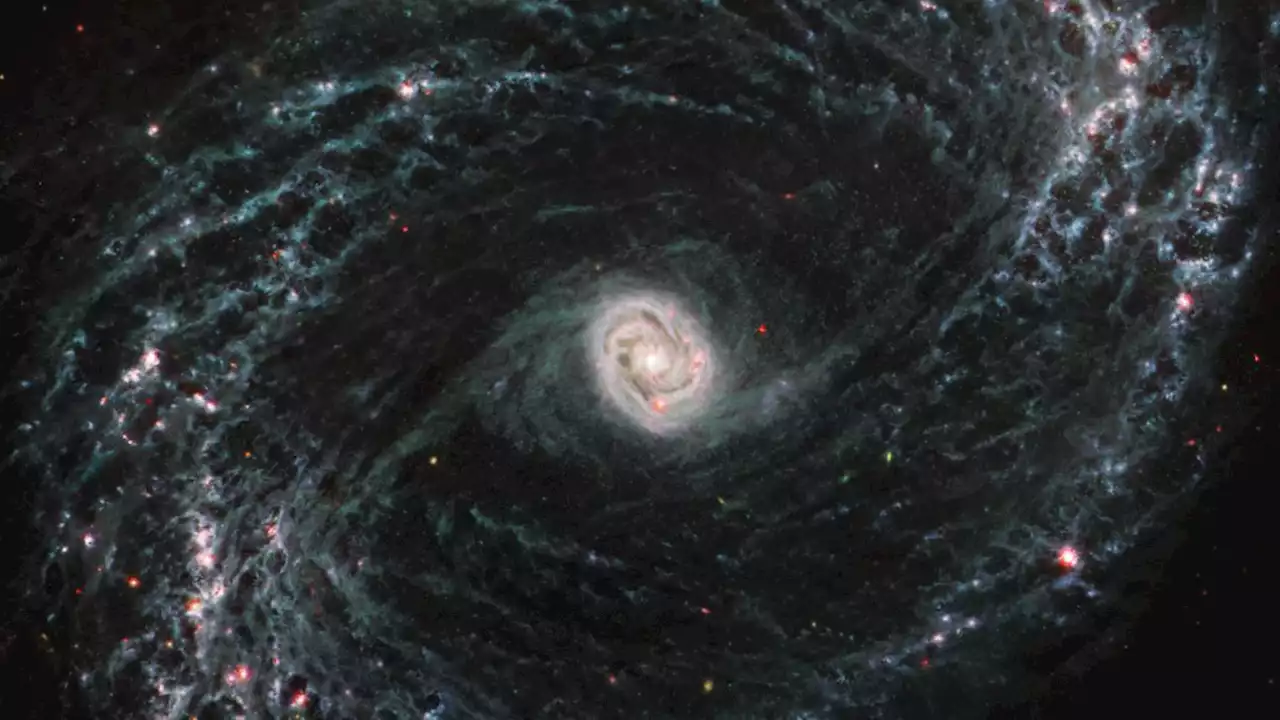NASA's James Webb Space Telescope has captured never-before-seen details in Pandora's Cluster, including a megacluster that has created a gravitational lens.
Ball Aerospace lead optical test engineer Dave Chaney inspects six primary mirror segments, critical elements of NASA's James Webb Space Telescope, prior to cryogenic testing in the X-ray & Cryogenic Facility at NASA's Marshall Space Flight Center in Huntsville, Alabama.
Engineers and technicians assemble the James Webb Space Telescope on Nov. 2, 2016, at NASA's Goddard Space Flight Center in Greenbelt, Maryland.Labbe's team used the Near-Infrared Camera, or NIRCam, to capture the cluster, for a total of around 30 hours of observing time. The next step for the team will be to go through imaging data and select galaxies for follow-up observation with the Near-Infrared Spectrograph .
United States Latest News, United States Headlines
Similar News:You can also read news stories similar to this one that we have collected from other news sources.
 James Webb Space Telescope captures jaw-dropping image of Pandora’s ClusterWith the help of natural super magnifying glass, NASA’s JWST captured the image of megacluster of galaxy. JWST all set to reveal deep secrets of the cosmos
James Webb Space Telescope captures jaw-dropping image of Pandora’s ClusterWith the help of natural super magnifying glass, NASA’s JWST captured the image of megacluster of galaxy. JWST all set to reveal deep secrets of the cosmos
Read more »
 The James Webb telescope spotted the earliest known 'quenched' galaxyA galaxy dubbed GS-9209 ceased forming stars more than 12.5 billion years ago after a 200-million-year-long sprint.
The James Webb telescope spotted the earliest known 'quenched' galaxyA galaxy dubbed GS-9209 ceased forming stars more than 12.5 billion years ago after a 200-million-year-long sprint.
Read more »
 NASA’s Webb Telescope Decided to Peek Inside This Intergalactic Pandora’s BoxFeast your eyes on a cosmic Pandora’s box, courtesy NASA’s James Webb Space Telescope.
NASA’s Webb Telescope Decided to Peek Inside This Intergalactic Pandora’s BoxFeast your eyes on a cosmic Pandora’s box, courtesy NASA’s James Webb Space Telescope.
Read more »
 James Webb Space Telescope spies baby stars dancing in swirling gas and dust (photos)Researchers can now see the influence of young stars on galaxy formation.
James Webb Space Telescope spies baby stars dancing in swirling gas and dust (photos)Researchers can now see the influence of young stars on galaxy formation.
Read more »
 Teutsch 76: a Deep Near-Infrared StudyWe have performed a detailed analysis on the Teutsch 76 (T76) open cluster using the deep near-infrared (NIR) observations taken with the TANSPEC instrument mounted on the 3.6m Devasthal Optical Telescope (DOT) along with the recently available high quality proper motion data from the {\it Gaia} data release 3 and deep photometric data from Pan-STARRS1 survey. We have found that the T76 cluster is having a central density concentration with circular morphology, probably due to the star formation processes. The radius of the T76 cluster is found to be 45$^{\prime}{^\prime}$ (1.24 pc) and 28 stars within this radius were marked as highly probable cluster members. We have found that the cluster is located at a distance of $5.7\pm1.0$ kpc and is having an age of $50\pm10$ Myr. The mass function slope ($Γ$) in the cluster region in the mass range $\sim$0.75$|$M/M$_\odot$$|$5.8 is estimated as $-1.3\pm0.2$, which is similar to the value `-1.35' given by \citet{1955ApJ...121..161S}. The cluster is not showing any signatures of mass-segregation and is currently undergoing dynamical relaxation.
Teutsch 76: a Deep Near-Infrared StudyWe have performed a detailed analysis on the Teutsch 76 (T76) open cluster using the deep near-infrared (NIR) observations taken with the TANSPEC instrument mounted on the 3.6m Devasthal Optical Telescope (DOT) along with the recently available high quality proper motion data from the {\it Gaia} data release 3 and deep photometric data from Pan-STARRS1 survey. We have found that the T76 cluster is having a central density concentration with circular morphology, probably due to the star formation processes. The radius of the T76 cluster is found to be 45$^{\prime}{^\prime}$ (1.24 pc) and 28 stars within this radius were marked as highly probable cluster members. We have found that the cluster is located at a distance of $5.7\pm1.0$ kpc and is having an age of $50\pm10$ Myr. The mass function slope ($Γ$) in the cluster region in the mass range $\sim$0.75$|$M/M$_\odot$$|$5.8 is estimated as $-1.3\pm0.2$, which is similar to the value `-1.35' given by \citet{1955ApJ...121..161S}. The cluster is not showing any signatures of mass-segregation and is currently undergoing dynamical relaxation.
Read more »
 James Webb captures most detailed view yet of Pandora's ClusterThe James Webb space telescope captures the most detailed view of Pandora's Cluster in its latest breathtaking image.
James Webb captures most detailed view yet of Pandora's ClusterThe James Webb space telescope captures the most detailed view of Pandora's Cluster in its latest breathtaking image.
Read more »
